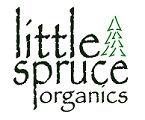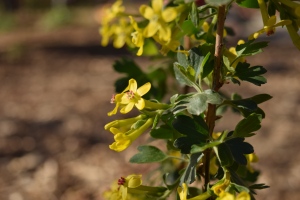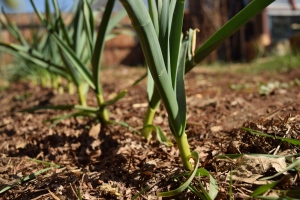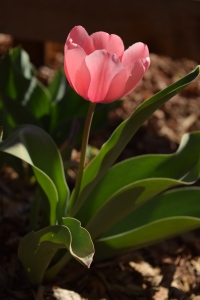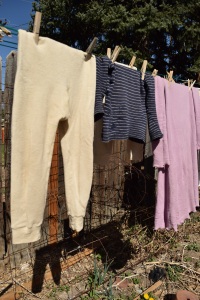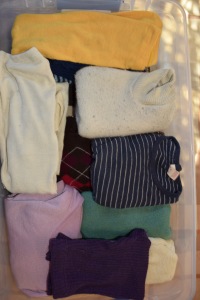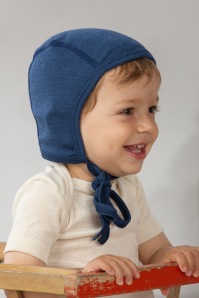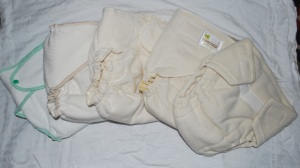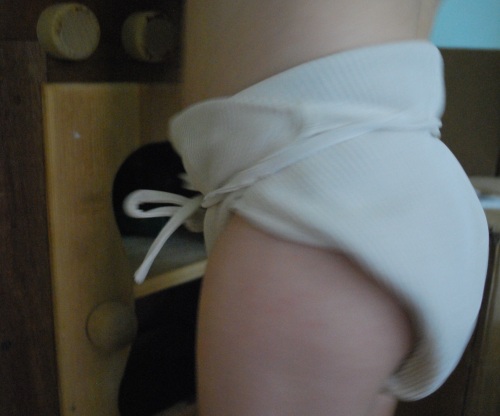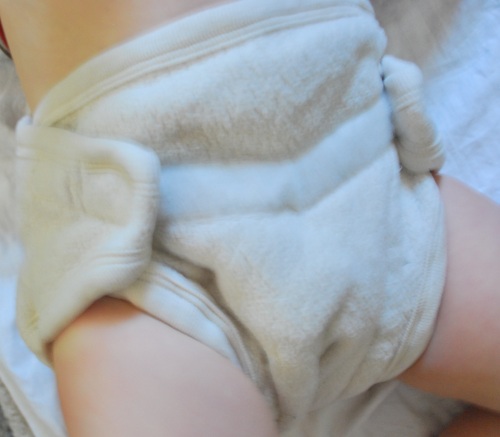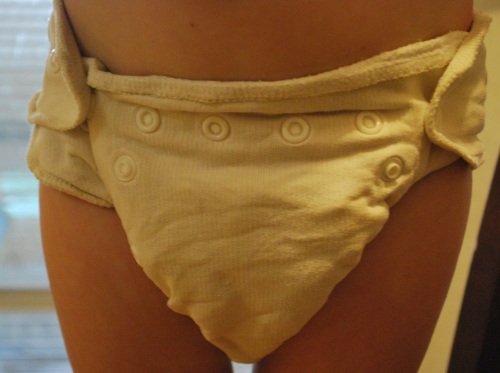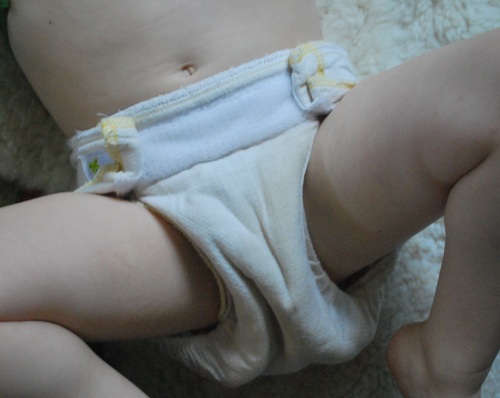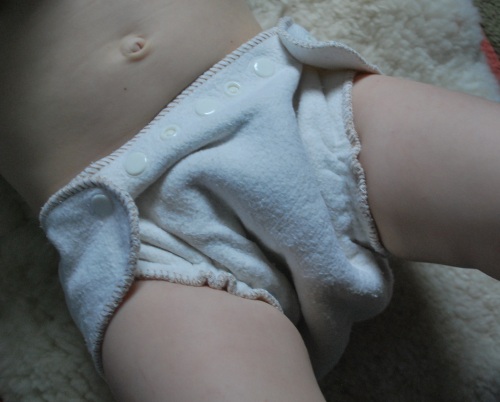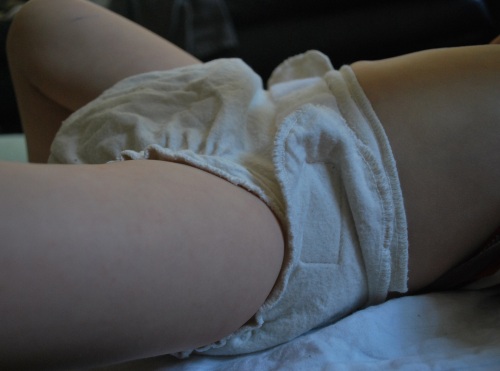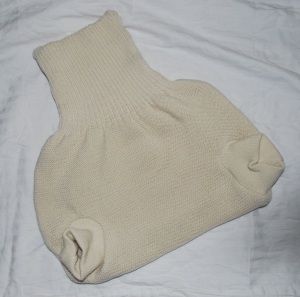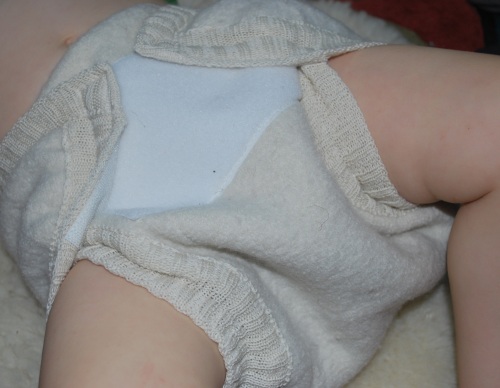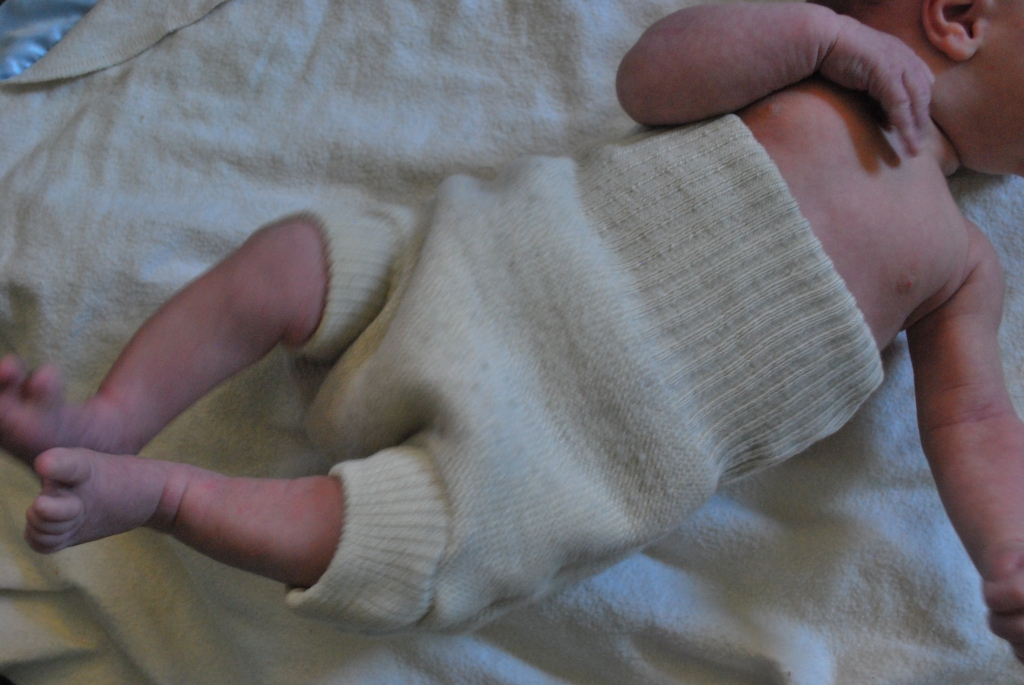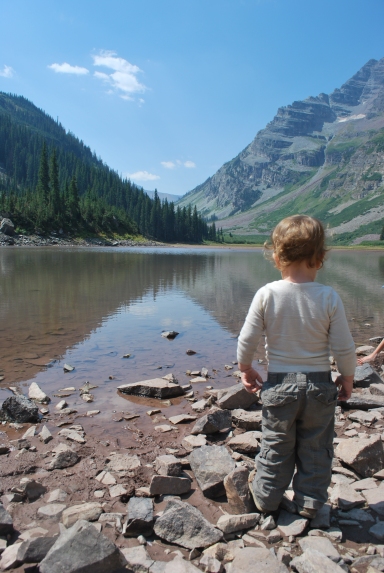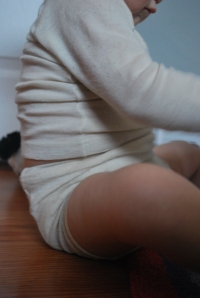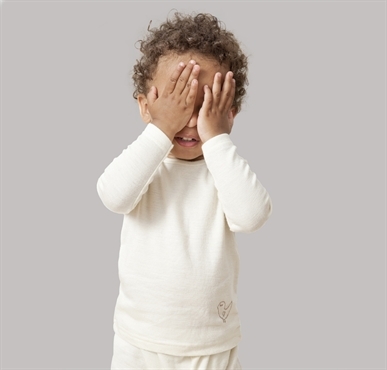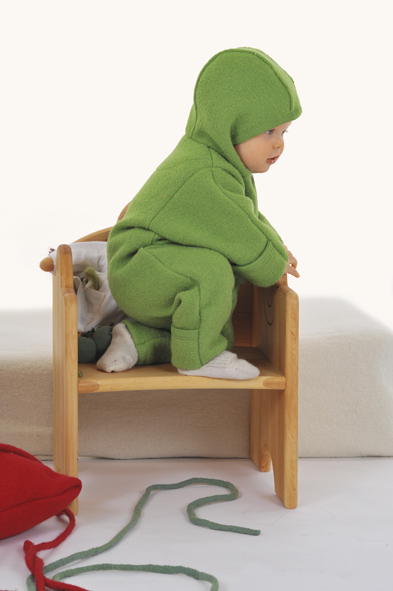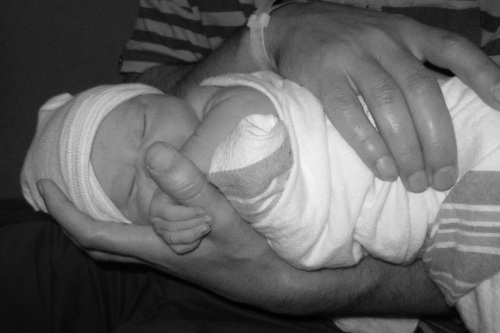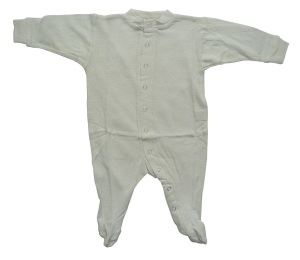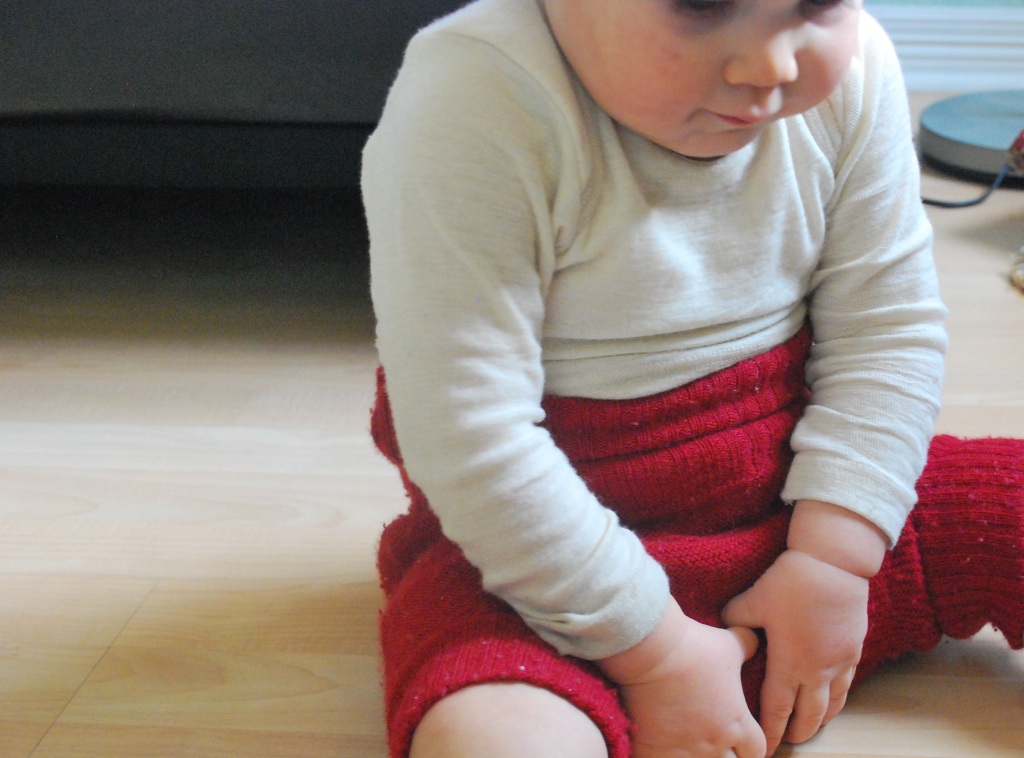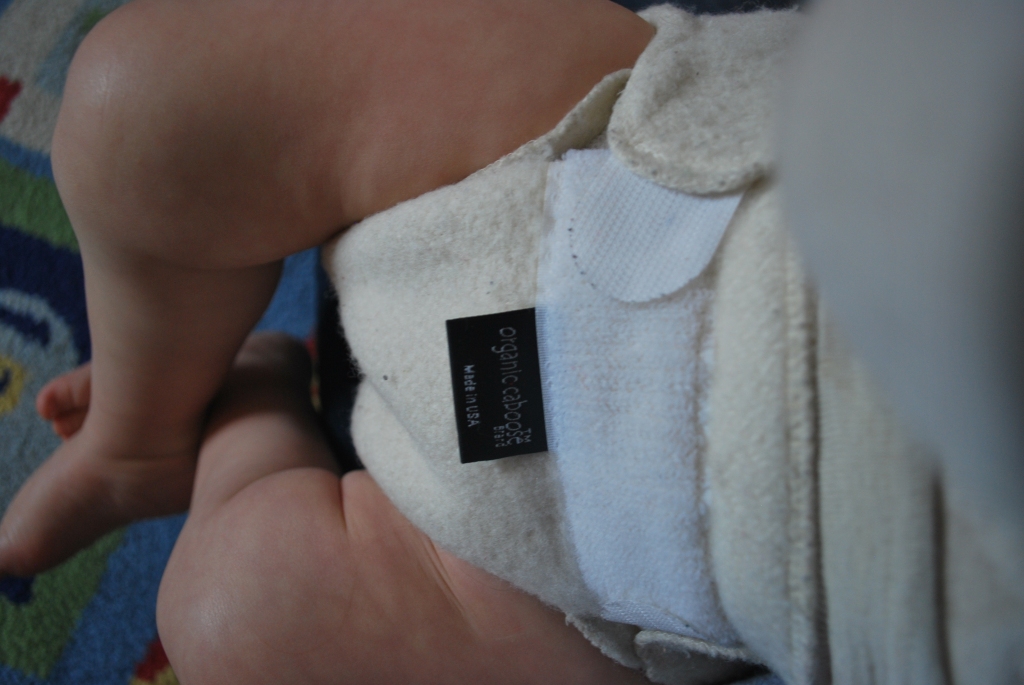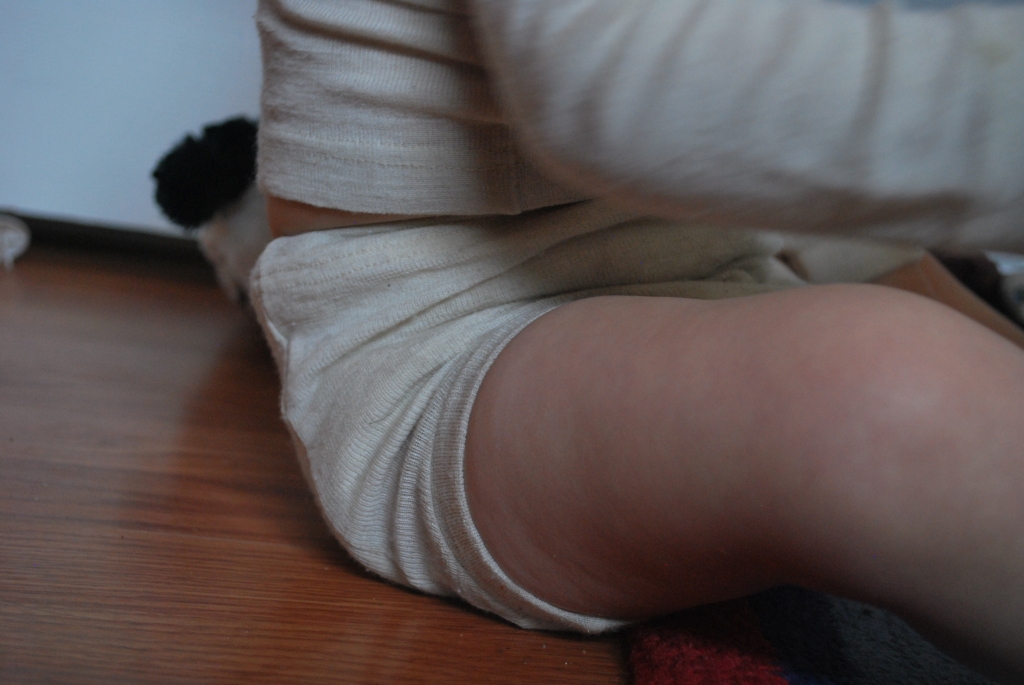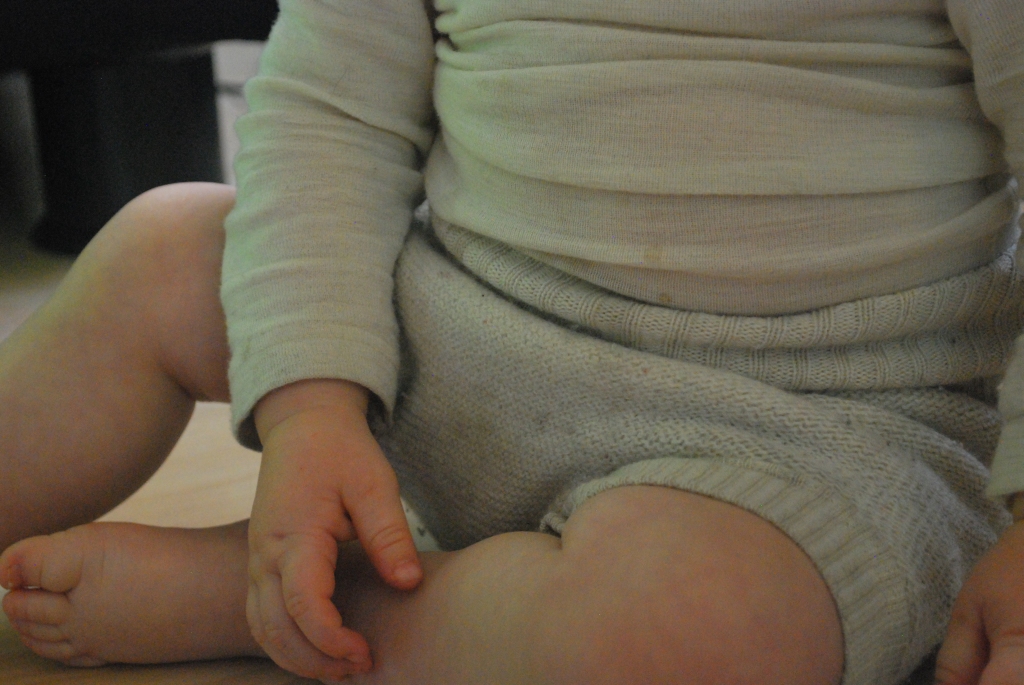%%Panel.HTMLHead%%
-
Tips on Storing Woolens during the Warm Season
The air is perfumed with the sweet scent of early bulbs and blooms, the fruit trees are unhurriedly and timidly revealing bits of color on their still bare branches, wary of the frosty nights that frequent Colorado late into spring.
Thin blades of grass, jagged edges of peppery arugula, sturdy tips of garlic, and delicate spring greens push their way through the earth, seeking sunshine but sometimes greeted with heavy, wet snowflakes or icy raindrops or hail instead.
Mornings are still cold enough to require a full ensemble of winter attire, but by mid-morning we peel off our layers and bask in warm sunshine. The kids blissfully spend their days outdoors and can’t be bothered to come indoors until bedtime. Springtime is, unanimously and unquestionably, one of the most loved seasons for our family.
Tempted to pack away all of our woolen base layers, mittens, hats, and coats for the season, a few bitterly cold spring mornings and late snowstorms pay us a visit to remind us that it’s not quite time yet. It is the season of spring cleaning and preparing for warmer weather, however, and with woolens for the entire family that I am determined not to be chewed to bits by moths while we play in the sun all summer, storage consideration and preparation is necessary.
Tips on storing wool:
- Wash all woolen apparel prior to storing away. This is of utmost importance. There’s nothing pests love more than dirty, smelly wool. Wash it by hand, throw it all in the machine (on delicate/wool cycle, cool water, not tumble dry, please!), or drop it all off at the dry cleaner, but find a way to get it all fresh and clean before packing it away. Wash it now, before you get caught up in that wonderful slowness that is summer, and you’ll be glad you did when you open up that box in the fall.
- Dry your wool completely prior to storing it- this is especially important if you intend to store your wool in any container that does not allow for much air circulation, such as plastic. To avoid stretching the wool, we always recommend reshaping garments and laying flat to dry. Never tumble dry your wool, of course, unless you’d like it to fit your infant instead of you.
- Create an effective moth barrier as a storage container. This means a container that allows some air circulation but discourages woolens as landing pads for flying insects. Some people store their wool in cedar chests, others in cotton bags or pillowcases, plastic storage totes, or even ziplock bags.
- Use dried herbs to confuse the moths. The lovely aroma of fragrant dried herbs such as lavender and eucalyptus is sure to leave nesting-ground-seeking winged pests perplexed and frustrated, leaving your favorite woolies intact while the pesky moths search for a more desirable, unscented location to lay their eggs. Sachets filled with dried fragrant herbs can be placed inside of the storage container along with the wool.
Why all this effort to store away my woolen clothes?
Can’t I just throw them in a heap in the closet or shove them in a box downstairs until Labor Day?
If you’re asking this question, then it’s likely you’ve never pulled out your favorite wool sweater on the first cold day of autumn only to find unsightly holes chewed throughout it. Properly cared for and properly stored, wool apparel can be passed down to younger children and used for years to come. Moths and other pests use wool and other animal hair fibers to as a nesting ground for their hatchlings to feast upon once born. Moth damage can be devastating, particularly considering the investment that is a wardrobe of woolen apparel .
Of course, if your family enjoys nature activities such as hiking and camping during the summer, you may not even need to store your woolen underwear layers, as they make lovely base layers for all sorts of outdoor activities and are essential for camping in regions where the evenings are chilly. We do still recommend laundering and properly storing heavier wool garments, such as wool coats, hats, mittens, and sweaters, since it’s less likely that you’ll be needing them during summer.
What to do if you discover moth eggs or larva on your wool:
Destroy all eggs or larva by thoroughly washing, soaking the wool in water and wool detergent, hanging the dry wool in the sun (do not hang wet wool to dry), or freezing the wool. Be certain to thoroughly clean all storage containers- vacuuming is usually effective.
What to do if you find the devastating aftermath of moths but no larva or eggs:
After finding a shoulder upon which to shed plenty of tears because your expensive woolen clothes have been ruthlessly chewed apart by impossibly small, seemingly invisible, and exceedingly elusive invaders, come back to your senses and assess the damage. Many moth holes in knits can be easily repaired with some basic sewing skills. (More on that in an upcoming post!)
In conclusion, please be sure to take the extra effort of properly cleaning and storing all of your precious wool clothing before the onset of summer. You’ll save both money and tears later on, and there are few moments in life more rewarding than opening a chest full of clean, lavender scented, nearly folded wool clothes that are all in one piece and ready to bundle you up when the crisp autumn air reminds you that a cozy sweater would be just right.
Happy Springtime!
-
End of Summer Sale- Save 20%
Woolen Season is Near! It seems as though summer has only just begun here in Colorado, and yet we already find ourselves daydreaming of crisp autumn days. We feel it's important to spend time outdoors every day, regardless of the weather, and so we look forward to pulling out our woolens and bundling up so we can all play outdoors comfortably- even our littlest family members!
A warm wool base layer is the perfect way to stay warm outdoors during the fall and winter, and cozy wool outerwear is excellent for winter in cold climates.
New Fall Arrivals
We've been working hard to add many exciting new arrivals before fall arrives. Here are a few of our latest arrivals.
We are very excited to introduce Ruskovilla'sbeautiful & high quality organic woolens for the entire family & cloth diapering products.
Pololo Outdoor Shoes
Pololo outdoor shoes for toddlers and children have arrived! Pololo shoes are made from natural, vegetable tanned leather with wool felt insoles. They have just the right amount of flexibility for developing feet.
Engel Machine Washable Wool for Adults
Engel's new line of machine washable organic woolens are now in stock in adult sizes & beautiful new colors.
End of Summer Sale
Now is a great time to prepare for the cool weather with woolens for the entire family!
Save 20% on your entire purchase, this week only.*
Coupon code endofsummer
*Excludes Sale items, Ostheimer, Pololo, Nanchen,Expires 8/17/14
-
Winter Woolen Essentials for Babies
Winter Woolen Essentials for Babies
As winter approaches, we receive many inquiries about which wool items are the most important as parents prepare their children’s wardrobes for fall and winter. Browsing through the many different options for wool underwear layers, outerwear, socks, hats, sleep sacks, and blankets, to name a few, can be overwhelming, so we have put together a list of favorite, essential winter woolen items that we hope will be helpful as you pull woolens out of storage and decide what new items will be needed for the snowy days ahead. We compiled this list based on what we use for our little ones at home as well as feedback from our customers.
Wool or Wool/Silk Baby Hat
If you purchase only one woolen item for your baby for winter time, a good quality hat or bonnet is one of the best investments you can make. It is so important for babies to have their heads covered, especially during the first few weeks and months of life. Young babies have not yet fully developed their ability to regular their own body temperature and have no way of telling us when they feel too hot or too cold. A great deal of warmth is lost through a baby’s head. In many cultures throughout the world, it is common for infants to have their heads covered most of the time, both indoors and outdoors, well into their first year of life. A breathable hat or bonnet made from natural fibers is an excellent way to ensure that your baby stays comfortable and warm.
The Engel Organic Wool Fleece Baby Hat is one of our favorite all-around winter hats. Wool fleece is probably the softest wool you’ll find, so it’s lovely for a newborn, and the hat is nice and thick for outdoor wear as well. This hat will be large on a newborn, but a baby born in the fall or winter is likely to be able to wear it for two winter seasons. Once your baby grows into it, the fit is snug, covers the ears nicely, and it has nice soft ties to help keep it in place when needed. The Disana organic merino wool knitted bonnet is another lovely mid-weight option that is great for babies and is available in smaller sizes.
For a lighter option, a nice lightweight bonnet made from wool or wool/silk is also lovely for an infant. Living Crafts makes a beautiful bonnet available inorganic cotton or a wool/silk blend, and Cosilana’s popular baby bonnet is available in organic cotton, pure wool, wool/silk, and a machine washablewool/silk/cotton blend.
For babies who have wool sensitivities, a pure silk hat is an excellent choice that has some of the same temperature regulating properties of wool.
Wool Tights
Wool tights are an indispensable winter item in our family, particularly for the youngest family members who aren’t yet walking. Feet are another crucial body part to keep warm for young babies, and while socks are necessary and an obvious choice for keeping little feet warm, they are rather notorious for being kicked off and magically disappearing into the depths of the washing machine.
A warm pair of tights keep not just little feet warm, but also ankles, legs, lower backs, and tummies! Tights for babies are simply brilliant. Pure wool tights are doubly wonderful because they require washing so infrequently. Just like wool socks, as long as you allow them to air out between uses, you can go weeks, even months at a time, without laundering your baby’s wool tights.
One of the greatest things about wool tights is that they keep baby’s ankles and legs covered any time baby is lifted up. Pants tend to ride up the legs, and so baby’s legs are frequently exposed to the elements any time baby is lifted in or out of the stroller or car seat, and also when baby is worn in a carrier or sling with legs dangling down. If your baby is wearing a pair of wool tights, your baby’s legs will always stay warm, regardless of how high baby’s trousers ride up.
The wool tights found in our store have nice high waistbands and generally are spacious enough to accommodate cloth diapers, even wool covers.
For an even softer texture without compromising warmth, tights are also available in a wool/cotton blend, and for babies with wool sensitivities, tights inpure organic cotton.
Woolen Base Layer: A Baby Bodysuit
A woolen underwear layer for babies and children is essential for families in any region with cold winter weather. These single layer, lightweight garments are breathable and soft and are snug fitting to be worn on their own in mild weather or layered underneath regular clothing on the colder days.
Woolen underwear is available in the form of a bodysuit, shirt, or a pair ofleggings, and while all options are wonderful for babies and children, in our opinion, a bodysuit is the most ideal option for an infant. This is once again due to the fact that babies are lifted up so frequently that shirts and pants inevitably ride up, exposing baby’s skin to the cold outdoor air. A warm bodysuit underwear layer solves this problem, keeping baby’s mid-section warm underneath regular clothing. We often dress our baby in a long sleeved shirt or sweater layered over a wool or wool/silk bodysuit.
For cloth diapering families, it is important to note that most wool bodysuits available in our store DO fit over a wool soaker. When in doubt, sizing up is always a good option, but generally speaking, European manufacturers are sure to leave room in the diaper area for a bodysuit to be easily snapped over a thick wool soaker. A wool or wool/silk bodysuit is excellent in this regard because it adds yet another layer of absorbent wool to help keep baby dry in the case of leaks.
Underwear layers are available in pure wool, a wool/silk blend for some added softness, and even a wool/silk cotton blend for a machine-washable option.
Wool Baby Sweater
I had to update this post to include a wool baby sweater because just a month into the autumn season here in Colorado, we have pulled out the wool knitted baby sweater more than any other apparel item we own (other than the wool hats, of course!). For babies, a warm wool sweater is the perfect solution to a chilly day and provides just enough warmth for outings in the car or walks in the baby carrier without over-dressing baby. On a crisp October day, we typically dress our baby in a wool/silk bodysuit layered underneath our favorite knitted wool sweater and a warm pair of wool leggings or cotton pants. I love the wool sweater because it can quickly go on and off over any outfit, and it’s trim-fitting enough to be kept on in the car seat, keeping baby cozy when a thicker jacket needs to be removed.
A few of our other favorite wool sweaters are the Disana Organic Knitted Sweater and the Engel Organic Wool Fleece baby sweater.
Wool Bunting for Outdoors
A wool bunting is often more appropriate for an infant than a jacket, since the bunting keeps baby warm from head to toe without exposing any skin. Buntings are available in soft organic wool fleece or wind resistant, boiled (felted) organic wool lined with organic cotton.
For something a little lighter that can be worn indoors or outdoors, a pair of wool overalls or a wool romper is also nice to have on hand for a baby. Theorganic knitted wool overalls from Disana are wonderful for this purpose and can be worn indoors on their own or outdoors with a warm jacket or sweater. The organic knitted wool romper with optional feet from Reiff Strick is another excellent choice that has the added benefit of foot coverage when needed.
Wool Sleep Sack
Most parents become quickly aware of their newborn baby’s need for warmth to stay comfortable, particularly while sleeping. It can be challenging to keep babies warm while sleeping, especially if they are asleep alone in a bassinet or crib. As babies become older and begin exploring the world around them, they often pull blankets over their faces or kick them off entirely. A wool sleep sack helps tremendously and is an item that can be used beyond the first year as well.
Wool sleep sacks come in all shapes, sizes, and varying degrees of warmth, so the decision will depend primarily on your baby’s age and how low the temperatures go at night in your home. While any wool sleep sack will keep your baby warm and will help regulate your baby’s temperature while sleeping, the warmest options are the long sleeved wool fleece and knitted wool sleep sacks from Reiff Strick, followed by the sleeveless wool fleece sleep sacks from Reiff Strick and the boiled wool sleep sacks from Disana.
For a mid-weight option the Disana Knitted Wool Sleep Sack is lovely, and for a lighter weight option, the Engel Organic Wool Terry Sleep Sack is another favorite in our home.
What have been some of your most treasured woolen items for your baby during winter time?
-
Organic Cloth Diapering & Wool Covers for Toddlers
Organic Cloth Diapering & Wool Covers for Toddlers
Now, at nearly 3 years of age, he is back in diapers full-time. Not wanting to fight or push him to do something he clearly wasn’t ready for, we have begrudgingly given him back his diapers, which seems to be a safe place for him, and we’ve decided to let him show us when he is ready for the potty again.
And so we find ourselves diapering two children, one of whom has grown quite large. Many of our “one-size” diapers no longer fit him, despite the manufacturers’ best efforts to create something that would fit all babies from birth through potty training. Since potty training takes place at a different age for each child, one never knows how long diapers will be needed. In our case, we needed to find diapers and covers that fit a child well over 35 lbs.
Wanting very much to continue our love affair with wool & diapers made from natural fibers, we naturally wanted to use organic cloth diapers with wool covers for our toddler as well as our baby.
So what are the best cloth options for a large toddler? We tried a wide variety of cloth diapers on our toddler, and here we share a few of our favorites- we have chosen these because they fit him well and they perform well. All of the diapers shown in these photos are pictured on our 3-year-old.
Organic Cloth Diapers for a Toddler
This timeless nappy was brilliantly designed, and so far, it is the only diaper we have found that is an authentic “one-size” diaper- from birth through toddlerhood. You can fold this diaper down and tie it snugly enough to fit a newborn, and unfolded and tied with still more room to stretch, this diaper will easily fit a much older child as well.
When to use it: Day or night. For nights when you need lots of absorbency, fold an extra double or even a prefold inside, and your toddler should be set for the night. This diaper works best with a wool soaker since the rise is higher, but it can be worn with a wrap cover as well, as long as the rise on the cover is high.
Engel Organic Cotton Fitted Diaper, Size 98/104 (2-3T)
It can be somewhat challenging to find a fitted diaper that actually fits a larger child, even in sized options. Engel’s fitted diaper in the largest size is quite generously sized, and its softness and absorbency makes us love it even more. With nearly a 10 inch rise and an aplix closure that allows for more freedom to adjust the waist on a larger child, this diaper fits most toddlers comfortably.
When to use it: The Engel fitted diaper is by no means the most trim of fitted diapers, but its high quality and thick, absorbent organic cotton make it a favorite in our home. In spite of its bulk, we use it day and night. The rise is high, so like the tie nappy, it fits best with a wool soaker, but it can be worn with a high-rise wrap cover as well.
Tiny Tush Trim 4.0 One-Size Fitted Diaper
The Tiny Tush One-Size fitted diaper is one of our favorite fitted diapers because it really fits babies from a very young age through toddlerhood. A tiny newborn can wear the snap-in doubler as a contour diaper on its own, and most infants can begin to wear the fitted diaper on its smallest setting when they are one to two months old. Likewise, this diaper still fits many toddlers at or over 35 lbs. Our toddler can still comfortably wear his Tiny Tush one-size diaper, snapped on its largest setting, and the diaper leaves no red marks on his skin.
When to use it: This fitted diaper is great for day or night. It comes in organic cotton or an organic cotton/hemp blend, so you can choose hemp when you’re looking for even more absorbency. This fitted diaper has a moderate to low rise, to it’s an excellent choice for both wraps and pull-on covers.
OsoCozy Organic Cotton Fitted Diaper, Toddler Size
The OsoCozy fitted diaper is a basic, no frills diaper made from organic, birdseye weave cotton. The toddler size fits our 3-year-old perfectly and leaves no red marks; the fit is gentle around the legs and there is no hidden elastic at the waist, so he can move comfortably. This diaper is packed with absorbency as well- the thick layer in the center makes this one a true workhorse. A great choice for a toddler, it’s trim fit make is excellent for daytime.
When to use it: Anytime! This is a great daytime diaper because it’s fairly trim, and it could also be used at night with an extra doubler. The rise is moderate to low, so like the Tiny Tush, you can use it with either a wrap or a pull-on cover.
Kissaluvs Organic Cotton/Hemp One-Sized Fitted Diaper
This is another excellent choice for a toddler. It’s a bit thicker and therefore more bulky than some of our other fitted diapers, but the hemp/cotton blend make it super absorbent and gives it a fluffy, fleecy soft texture. A snap-in liner is also included when extra absorbency is needed. This diaper fits a toddler fairly well when snapped at its largest setting, but it is slightly more snug around the thighs than the Tiny Tush or OsoCozy, so it may not fit as well on a chunky-legged toddler.
When to use it: Anytime- especially great for night time. There’s a little bit of bulk, but it’s certainly trim enough for daytime, and the rise is not too high, so wraps or pull-on covers both work well. The hemp fleece gives this diaper a “stay-dry” effect.
Disana Organic Cotton Fitted Diaper, Size 86/92 (12-24 mo)
This diaper pleasantly surprised us by fitting our toddler at 35+ lbs, even though its size indicates a 12-24 month age range. This is a generously sized fitted diaper, and the fit is comfortable on our toddler and leaves no red marks. The diaper is made from Disana’s super-soft organic brushed cotton flannel, which seems to get even softer with each wash, so it feels lovely next to baby or toddler skin.
When to use it: The shape is rather unusual- there seems to be a bit of extra fabric in the back of the diaper, making it pooch out a little in the back (and also accommodating those extra large toddler poops!). This is only noticeable when the diaper is worn without a cover- once you put a cover on, its soft material easily fits into any cover, the diaper is trim and works well with either wraps or pull-on covers.
Last but not least, the organic cotton flat. This is an excellent, affordable choice in diapering that fits newborns and toddlers with ease. Our organic cotton muslin flats have a permanent spot in our cloth diaper stash, and the same flat is worn by our 8-month-old one day and our 3-year-old the next. Organic cotton flats are available in lightweight muslin from Engel and Disana, or from a thicker birdseye weave from OsoCozy. There are unlimited possibilities of methods for folding a flat, and we have tried many, but the fold we always fall back on for our babies is the “Jo” fold. This fold seems to be the most versatile when it comes to fitting both small and large babies and is shown on our 3-year-old below:
Wool Covers for a Toddler
Disana Wool Soaker, Size 110/116 (4-5T)
The Disana cover in size 110/116 (4-5T) is very generously sized, so if you have a toddler who needs a diaper cover, this is one of the best options. Since wool soakers have no closures, you can really stretch them and make them fit your child for even longer than the age range indicated. These are excellent for older children who still wet the bed at night as well, fitting most children well into the ages of 4 or 5, and sometimes older. Pull-on covers are comfortable for children of any age, and they slide easily on and off like a pair of shorts.
When to use it: While most parents will choose a wool soaker as a night time solution for toddlers or older children who are still not night trained, a toddler can wear a soaker during daytime as well.
Engel Organic Wool Soaker, Size 98/104 (2-3T)
Engel makes a lovely wool soaker from soft knitted organic merino wool, and its largest size, 98/104 (2-3T), is so generously sized that it’s nearly identical in size to Disana’s size 110/116 (4-5T). This size fits our toddler just right and still allows for plenty of room for growth. Wool soaker are fabulous for toddlers who are still in diapers full-time or for kids who aren’t quite night time potty trained and need some protection for nights.
Disana Boiled Wool Cover , Size 98/104 (2-3T)
Disana’s boiled wool wrap runs very large, so size 2-3T should fit most children up to at least 3 or 4 years of age. With a rise measuring a whopping 11 inches and a waistline that stretches to around 23 inches, this cover was clearly designed with the un-potty-trained 3 or 4 year old in mind. This is another nice option for a child who needs a little more night time protection in case of accidents.
When to use it: We prefer this for night time or naps. The rise is high, and the cover is unusually shaped, so during daytime it can be obtrusive for a baby who is just learning to sit or walk. For a toddler who is very competent at walking and running, obtrusion of mobility isn’t an issue with this cover. However, this is not a trim cover, so some parents prefer this for nights.
Wool Longies
Wool longies are a great investment for an older baby or child, and you can get even more use out of them if you are cloth diapering. Use the wool pants as a cloth diaper cover while your toddler is still in diapers, and once potty trained, you can of course continue using them just as pants during the winter months. Disana wool pants are a favorite for this purpose, and they come in large sizes.
Flushable Liners
Flushable liners deserve to be mentioned when discussing cloth diapering a toddler. These liners make messy diapers a little easier to clean. OsoCozy andDisana both make nice disposable liner option.
Which cloth diapers have you found that still fit during toddlerhood?
Type the details of your news item here...
-
Cloth Diapering a Newborn with Wool
After months of scraping, spraying, rinsing and soaking toddler cloth diapers and overcoming the tremendous challenges of potty training, I had forgotten how much I enjoyed cloth diapering a newborn. I welcomed the simplicity of a diaper that requires nothing… extra, other than the sheer joy of gazing into my sweet newborn’s face while putting a fresh diaper in place.
When our first son was born, we had not yet discovered the joys of using wool full-time, hence the great struggle with stinky polyester covers that never seemed to breathe enough to keep the diaper rash away.
This time, everything is different, and I am thrilled to report that it is entirely possible to use wool full-time, even on a tiny newborn. Cloth diapering a newborn with wool covers does require some preparation and planning ahead to be sure that you have the right supplies on hand, so we have compiled a few tips to make it as easy as possible.
Fitted, sized diapers will make your life a lot easier when using wool on a newborn. You will need approximately 2 or 3 dozen fitted, organic cotton diapers in a newborn size. If you plan on using cloth full-time for your newborn, it’s not a bad idea to invest in newborn, sized fitted diapers, such as theOrganic Caboose newborn fitteds or the OsoCozy fitteds, as opposed to a one-size diaper. You can certainly use a one-size fitted diaper, but we have yet to find a one-size diaper that actually fits a newborn baby, so unless you want a diaper that is so gigantic that your tiny baby can hardly move, it will be well worth the money spent. Plus, newborn sized fitted diapers typically fit babies between around 7 and 13 lbs, so your baby can wear them for at least a few months. Compare this to the cost of buying a package of disposables every week, and your savings are big.
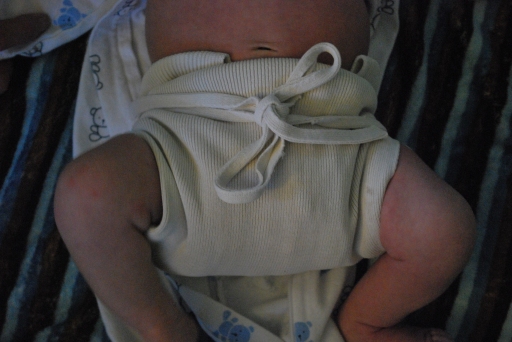
Tie nappies are great for newborns, but with wool covers, they work best only if you have become quite skilled at tying them so that there are no gaps at the legs (to avoid messes inside of your wool cover)
We suggest fitted diapers for newborns because of the notoriously explosive newborn poo! We love prefolds, flats, and tie nappies, but if you want to use wool full-time on a newborn, you may quickly tire of rinsing out stained wool covers, which must be hand washed. Fitted diapers are much more effective at containing the orange explosions—far better, in fact than disposable diapers, from which newborn poo inevitably finds an escape route and ends up all over the blankets, clothes, and anything else that was just cleaned.
Wool soakers and newborn babies are a match made in heaven. We love wool soakers for newborns for so many reasons- organic, soft, warm natural fibers keep your baby just the right temperature, warm and dry, and they can wear them all the time! With so much time spent at home just cuddling and loving, your newborn can wear his or her soaker on its own or underneath loose clothing and stay comfy and warm. There is really no need for separate day/night covers when using wool full-time on a newborn. The soft wool envelops their tiny bodies, rising up to the chest to keep their mid-sections warm, and the long legs of the soaker fits a newborn like a little pair of pants, keeping those tiny legs just the right temperature too. With a fitted diaper underneath, your wool should stay clean enough to require very little washing, which is always a relief for a new mother. A wool soaker that has been lanolized properly will keep your little one’s clothing and bed dry at night time as well. If your budget is small, purchase a wool soaker one or two sizes up, which will fit big right now but can be used for many months, if not years.
Another type of wool cover that we adore for our newborn are the lightweight,Engel nappy pants. Lightweight, breathable, and comfy, these little wool shorts will keep your newborn dry just long enough for you to know it’s time for a diaper change. Since frequent changing is ideal for sensitive newborn skin anyway and helps prevent diaper rashes, the nappy pants offer just the right amount of protection.
Prep your wool covers in advance!!! This means before baby arrives, not after. This must be part of your nesting duties. If you wait until after your baby arrives, weeks will pass before you have any desire to stand over a sink lanolizing and washing wool covers, so unless you have a family member who loves you enough to do it for you, prep your wool while you’re still pregnant!
This means washing and lanolizing brand new soakers several times, and allowing for a few days of drying time. This also means prepping your cloth diapers if they are brand new- remember that cloth diapers made from natural fibers must be washed in hot water 3-5 times before they are ready for use. Do not skip these steps and attempt to put a brand new cloth diaper with an unwashed wool soaker on your newborn because you’re anxious to try them out. Skipping this important step will result in lots of leakage.
Have a wool wash bar on hand for spot cleaning. Despite your best efforts and a stash of fitted diapers that fit your baby well, there will be times when your wool gets messy. As a new mom, protect yourself and respect those first few precious weeks of recovering from childbirth and bonding with your baby- the last thing you should be doing is washing your wool. With a wool wash bar, you can easily rinse out stains and rub a little soap onto the stain in less than 2 minutes, set the wool aside to dry, and by the end of the day, your cover will be good as new! This is a great job to delegate to husbands and other family members who can offer a helping hand.
Most importantly, make sure that cloth diapering is enjoyable for you and your new baby! If it’s too much, give yourself a break and use disposables for the first few weeks. We moms have enough mom guilt for the rest of our babies’ lives to stress over extra laundry when we should be resting, so if you don’t have someone doing laundry for you, don’t do cloth, and don’t beat yourself up over it! Spend every minute you have resting and cuddling with your precious new baby. Bringing a baby into the world is hard work, and you have earned every minute of this babymoon.
-
Woolens for Babies During Wintertime
It’s Woolen Season! In this article:
- The Benefits of Woolen Underwear for Babies & Children
- Which woolens are best for underwear?
- What other wool garments are good for babies for winter?
As the cooler months approach, wool is flying off of our shelves faster than we can keep up with it. And it’s no wonder- wool is nature’s perfect fiber to bundle up your baby for the winter months. Wool booties, wool hats, wool sweaters, wool leggings, wool overalls, wool mittens, wool blankets, wool diaper covers… and a well-kept secret, wool underwear. There is no better way to keep your baby at a perfect, consistent temperature while playing outside in the cold and snow, going for walks, hiking and camping, riding in the stroller, sleeping…and just about anywhere!
Woolen Underwear for Babies & Children: The BenefitsWhile there’s nothing like a cozy wool sweater, hat, or jacket for playing outside in chilly weather, it can be easy to overlook the tremendous benefits of how your child is dressed underneath her regular clothing. It’s incredible how much extra warmth is provided by a simple, single-knit wool shirt or pair of leggings.
- Wool is breathable. Unlike a synthetic long underwear for winter, a high quality wool base layer still allow your child’s skin to breathe, keeping them from overheating or sweating. This is excellent for newborn babies who are unable to regulate their internal temperature or let us know when they feel too hot or too cold. This also makes wool excellent for sleeping- babies sleep comfortably in wool, as their skin can breathe and they are not exposed to synthetic materials, which are not breathable and can easily cause overheating.
- Wool is temperature-regulating: Woolen underwear are wonderful for those crisp fall days when the weather could turn any way the wind blows. If the day is warmer than expected, the temperature regulating properties of wool will prevent your child from overheating. A lovely single-knit wool shirt or leggings are perfect for use on their own as well when the weather warms up a bit. For very chilly days, a snug layer of wool or wool/silk blend will keep your child insulated underneath regular clothing.
- Wool is very absorbent: Wool can absorb up to 40% of its weight In moisture before it will begin to feel wet. This is extremely beneficial for an underwear layer because if your child is very active and begins to sweat, the wool will absorb the moisture but will take some time to feel damp, thus keeping your baby feeling warm and dry. Even when wool becomes wet, since it regulates temperature very well, it does not feel cold.
- Wool is self-cleansing: Wool has naturally antibacterial properties, so it does not need to be cleaned frequently. The lanolin that is naturally found in sheep’s wool helps to remove odors as the wool becomes damp. This is beneficial for underwear layers because your child can wear them again and again, through sweat, urine, and dirt, and you will not need to wash it frequently!
Which woolens are best for underwear?
Single-knit Organic Merino Wool. A single-knit, pure, 100% organic merino wool shirt and leggings is excellent for underwear during winter, and it is also perfect on its own for spring, fall, and even for summer camping trips! Our son wears his pure wool shirt from Engel year-round, and his favorite time to wear it is for summer hiking an camping trips.
Wool/Silk Blends (Single-Knit). A wool/silk blendis also a lovely choice because these garments have not only the beneficial properties of wool, but also the benefits of silk. This lightweight, breathable, temperature-regulating fabric makes an excellent combination with pure organic wool. This blend keeps your child warm and cozy without overheating, it is easy to clean, and most importantly, these natural fibers are safe for your baby.
Choosing garments that are single-knit as opposed to thicker, double-knit garments enable you to dress your baby in other clothing over the wool. You can also dress your baby in a single-knit garment on its own, but they are thin, so while they are wonderful for moderate weather, if the weather is quite cold, it is ideal to add an extra layer over the woolen layer or to dress your baby in a double-knit or thicker, felted wool garment.
What other wool garments are good for babies for winter?
Wool pajamas. Investing in a high quality pair of footed wool pajamas will allow your child to sleep comfortably year round. Wool terry pajamas are excellent for the cooler months of the year, as they are slightly thicker without being too hot, and you can still layer a single-knit layer of wool underneath them or add a thick pair of wool socks for the coldest nights. If your baby does not like sleep sacks and still kicks the blankets off, wool pajamas will keep your baby at just the right temperature without any blankets at all. For the warmer months, a single-knit pair of wool/silk pajamas is ideal.
Boiled Wool Outerwear. Boiled wool is the warmest wool we have found, making it ideal for outdoor wear during the colder months of the year. Boiled wool is essentially felted wool. Water, heat, and friction are used to break up the wool’s structure, resulting in felted wool that is half the original size of the wool in all directions. During this process, thousands of tiny air bubbles are trapped in the material, which forms an entirely natural barrier against both hot and cold temperatures, keeping your baby’s temperature constant even in very cold temperatures.
Boiled wool is soft and light, so it is very comfortable for your child to wear. Boiled wool protects your child against the cold, is almost entirely windproof, and like all wool garments, helps balance hot and cold temperatures. The result is a fabric that keeps your baby warm and dry while allowing your baby’s skin to breathe.
-
Keep Your Baby Cool in Summertime with Organic Silk
During the heat of the summer, particularly during an exceptionally scorching summer such as this one, new parents often struggle to find appropriate clothing for their newborn baby. The dilemma is this: how do we find clothing that will keep our babies at a comfortable temperature under the heat of the sun without exposing their delicate skin to the sun’s damaging UV rays?
Silk is one of the best natural fibers for keeping babies comfortable without overheating. Lightweight, delicate, and incredibly breathable, babies can wear an organic silk top in the heat of the summer and feel cool and comfortable.
Take that same silk garment and make every step of its production sustainable, and you simply cannot go wrong when it comes to selecting fabric to dress your little one. Certified organic silk is a fabric that is not widely available but that is second to none when it comes to delicate newborn skin. Organic silk is without doubt, one of nature’s most pure and luxurious gifts to a newborn baby.
Why is silk ideal for babies?
- Silk is gentle and soft, making it ideal for sensitive baby skin, soothing for those with allergies.
- Silk is absorbent and stays dry. Silk has the ability to absorb 30% of its weight in moisture while keeping your baby’s skin dry.
- Organic silk is safe for your baby. Organic silkworms consume only organic mulberry leaves, making the final product free of any residues of harmful chemicals.
- Silk has a excellent thermal capacity. Silk is temperature-regulating, maintaining a consistent body temperature for your baby, so your baby will not overheat or become cold while wearing silk. Silk is perfect for any time of year!
- Untreated silk, or ‘raw silk’ has healing properties. Raw silk has not been degummed, meaning that the natural seracin, or silk gum, has not been removed from the filament. This type of silk does not have the typical sheen that most people associate with silk, but it is excellent for babies with sensitive skin. Sericin is said to be healing and anti-inflammatory.
- Silk is lightweight and breathable. Silk clothing is not bulky, enabling you to keep your baby warm with fewer layers. It is ideal either on its own year-round or as a base layer during the cooler months of the year.
- Silk is easy to care for. Most silk garments may be machine washed up to 86 degrees F and dry very quickly since they do not retain moisture.
What is organic silk?
Conventional silk is available everywhere, and its production dates back thousands of years, but few people are aware of what is actually involved in the production of this luxurious textile. We hear a lot about organic cotton these days, but what about organic silk?
The reason there is not much talk of organic silk is that it is very rare. In fact, there is currently only one site for certified organic silk production in the world. The first and only certified organic silk farm in the world, SABA (Sichuan Alkena Biodynamic Agricultur), is a biodynamic farm that is certified by theIMO (Institute for Marketecology) in every step of the silk’s production, from the raw material to the fabric dyes and labor conditions.
Located in the Sichuan province of southwestern China, this project is unique in many aspects. In a world of silk production that involves monoculture, dependence on heavy chemicals, and exploitation of poorly paid laborers, the Sichuan Alkena project is truly a gem in the textile industry.
Silk is a direct product of the silkworm, which eats continuously for approximately 30 days before building its cocoon and spinning its silk thread. As is true with all natural fibers, the quality of the raw material (the silk cocoon, in this case) is directly related to the quality of the end product. Essentially, the silk worm is made of mulberry leaves. Therefore, the quality of the diet of the silkworm itself directly affects the quality of the silk fibers. A silkworm that eats only organic mulberry leaves will produce a much higher quality silk filament that is free of any harmful pesticide residues.
If the feed does contain harmful substances, the silkworm, a highly sensitive organism, will react directly to such substances. The silkworm will either perish or will not develop properly and will be at risk to many different types of diseases. Cocoons produced by diseased silkworms are smaller, spotted, thin-walled and yellow in color instead of the healthy, pearl white color of the healthy cocoons.
A healthy silkworm produces a healthy cocoon, which in turn produces healthy, long filaments that may be endlessly unreeled. This silk is a much higher quality than silk produced from an unhealthy cocoon. Lower quality silk filaments are dull in color, which results in an uneven knitted silk fabric, often resulting in chemicals being added during the preliminary coloring stages. As with any textile production, residues of these harmful substances will remain on the final article of clothing.
In the organic silk production on the Sichuan Alkena project, the mulberry trees are grown organically and inter-planted with hundreds of other fruit and over 5000 other plant and tree species that provide nesting sites for birds as well as shade and protection from the wind. The farm is run using biodynamic farming principles. The biodiversity found on this project creates a harmonious, thriving ecosystem that mimics nature.
Poor labor conditions and low wages are another major concern in the production of conventional silk. The labor conditions on the Sichuan Alkena farm are excellent. The workers enjoy safe working conditions, a casual and relaxed work environment, no child labor, and fair wages. Sichuan Alkena’s biologically dynamic cultivation of silk improves environmental conditions, overall living conditions, and requires the need for more manual labor, which has a positive effect on the high level of unemployment among the Chinese countryside populations.
All processes in Sichuan Alkena’s organic silk production, including knitting, weaving, dyeing, printing, and sewing are inspected annually by the IMO and meet the GOTS organic production standards. All dyes used in Alkena’s organic silk is free of heavy metals, toxins, and AOX.
Alkena’s organic baby collection includes beautiful short and long sleeved tops, trousers, rompers, bonnets, and bodysuits. What better first outfit for a summertime baby than lovely, pure organic silk?
-
Organic Cloth Diapering: Getting Started
Organic Cloth Diapering: Getting Started
Exciting as it may be, getting started with cloth can be quite overwhelming. The variety that exists is exhausting. If you are familiar with our store, you probably already know how selective we are about our offering of cloth diapers.
We feel so strongly about the importance of natural & organic fibers touching your baby’s skin that we have chosen to offer only cloth diapers made fromorganic, natural fibers. This eliminates any concern for artificial materials such as polyester will be in close contact with your baby’s skin.
The best part about all of this is that it makes your cloth diapering decisions much, much easier! Once you cut out all of the choices that include polyester, the number of choices that remain is substantially smaller and not nearly as overwhelming. Not only that, but the factors such as quality and health for your baby means that any choice is a good choice. Now it’s just a matter of narrowing it down to what style you like best, how each diaper fits your baby, and your budget.
The beauty of cloth diapers made from natural fibers is that they are extremely absorbent- each diaper, be it a flat, tie nappy, or fitted, is 100% organic cotton and/or hemp, all of which are incredibly absorbent materials.
Organic Cotton Flats, Prefolds, and Tie Nappies
This category is important because not only is it the most simple and traditional method of cloth diapering, but it is also the most affordable. As long as you don’t mind spending a little time learning the various folds and styles for using these diapers, you will find that they are easy to use and do the job well.
Flats, prefolds, and tie nappies all have one thing in common: they are comprised of one, flat piece of cotton (or other natural fiber). This piece of fabric can vary in thickness and layers. It becomes a diaper when folded directly inside of a diaper cover, folded and fastened with a pin or snappy, or tied onto your baby. These diapers all require a diaper cover to become waterproof.
Flats are gaining popularity these days, and for good reason. Flats have been around for years but have been overshadowed by new trendy styles of diapers. As many parents are realizing the benefits of a completely organic cloth diapering solution, flats are making a comeback and have taken their rightful place in the spotlight once again.
There is a multitude of ways to fold a flat, and we will be featuring an article on folding flats on our blog soon! The benefit of a flat is that it can last from the newborn stage through the toddler stage. That’s right- one diaper, one size, cost between $3-$7 per diaper, that will have your baby covered for 2 years. It’s hard to beat.
A flat will need a cover, of course, and our favorite cover to use with a flat is a wool soaker, wool shorts, or a wool wraparound cover. At night time you can ‘stuff’ a flat with extra doublers, and you can even layer two flats together, fold and stuff them to increase absorbency at night.
Prefolds are similar to flats, but they can have up to eight layers or cotton sewn together with stitching throughout the diaper and around the edge that creates absorbent pillows within the diaper. Prefolds, like flats, require a bit of a learning curve to get down all of the folds, but once you’ve got it, it’s a wonderful diapering solution. Prefolds are typically sized, so you will need to size up as your baby grows.
Tie nappies are a popular concept in Europe and are gaining popularity in the US these days as well. Tie nappies are a bit more tricky to get on your baby than a flat or prefold, but once you have the hang of it, you can do it with your eyes closed. Or in the dark, at 4 am, on a squirming toddler. It can be done!
Tie nappies are wonderful because they require no snappior pin at all (this makes life a lot easier if your snappis have a tendency to run off and hide at that exact moment when you need them). You simply fold, wrap around your baby, and tie with the cotton strings. These diapers are as absorbent as you want them to be- to make them more absorbent, you simply stuff them with extra layers, which can be a prefold, a brushed cotton liner, any type of doubler, or combination of any of these.
The cuteness factor of the tie nappy tempts many a mama, and most mamas fall in love all too quickly with the tie nappy. A favorite in our household, we use tie nappies on our son day and night.
Organic Fitted Diapers
The fitted diaper resembles a disposable diaper more, as it has been sewn into the shape of a diaper, typically featuring gussets around the legs and waist, hidden elastic at the waist, and some type of closure, usually either snaps, Velcro, or nothing at all (requiring the use of pins or snappis).
Many fitted diapers consist of multiple absorbent layers of fabric as well as extra inserts or doublers either sewn or snapped in, giving you the option of adding or removing absorbency as needed. Fitted diapers are available in various sizes or one-size. All fitted diapers require a cover to become waterproof.
Both convenience and absorbency are the main benefits of fitted diaper. Fitted diapers can be quite thick, and since the entire diaper is made from an absorbent, natural fiber, every inch of the diaper will absorb moisture. Fitted diapers paired with a wool soaker are an excellent night time diapering solution.
How many cloth diapers to buy?
Generally speaking, you will need around 12-24 cloth diapers (depending on the age of your baby and frequency of changing) and 3-4 wool covers (if you’re planning to use only wool). A good rule of thumb when you’re just getting started is to purchase a small sampling of various types of diapers so that you can get a good feel for what works best on your baby before investing in an entire stash of just one style of diaper.
-
Using Wool Full Time & Choosing the Right Wool Cover for Your Baby
Using Wool Full Time & Choosing the Right Wool Cover for Your Baby
Many cloth diapering parents are aware that it is possible to cover their baby’s cloth diaper with a wool cover, but few realize that it is possible to use wool both full-time and exclusively.
When we first discovered wool in our home, we had no intention of using it full-time. Up until that time, we had been unable to find a diaper that would keep our baby dry at night, so we invested in a wool soaker, thinking we would use it for nights only. The soaker worked so well that we purchased several other wool covers shortly afterward, and we quickly found ourselves so enamored with wool that we replaced all of our baby’s polyester covers with wool. I cannot remember the last time I used a polyester cover, and the truth is, wool works so incredibly well that I don’t miss those old polyester covers- not even one bit. And my guess is that our son doesn’t miss them either.
How many wool covers will I need to use wool full-time?
The exact amount of covers you will need will again depend on your budget, but the beauty of wool is that you can easily get by with very few covers. This is primarily due to the fact that wool does not need to be washed frequently (at most once a month), and as long as you let the covers air out between uses, you can use the same cover again and again, rotating two covers throughout the day and night.
For a small to moderate budget, we have found that you can get by withtwo daytime wool covers (either pull-on or wrap style, depending on your preference), and one or two nighttime soakers (one will work, but two is ideal so that you can rotate between the two while one is being washed and dried). If your budget is larger, investing in a few additional wool covers can certainly make things more convenient, though it’s not necessary.
Choosing the Right Wool Cover
Like most cloth diapering products, the variety of wool covers available can be daunting. It can be difficult to determine which wool covers will be appropriate for your baby’s needs. The types of wool covers that you need will depend on several factors, such as the amount of time you and your baby spend outside of the home, the climate, the time you have available to care for your wool, etc. Once you identify your needs and determine which types of covers will be a good fit for you and your baby, you may soon find yourself reaching for a wool cover every time you change your baby’s diaper.
If you’re just getting started with wool and are intrigued by the possibility of using it, either on a part-time or full-time basis, the charts below provide a comparison of some of the wool covers we carry in our store, appropriate times to use each cover, and some pros and cons of each.
We have placed the following wool covers into two basic categories: Pull-on Wool Covers, which have no velcro, snaps, or closures of any kind and can simply be pulled onto your baby like a pair of pants; and Wrap Wool Covers, which have a closure such as velcro or snaps and fit in a very similar fashion to a polyester diaper cover. Both work well; the decision is really based on your own personal preference and needs.
Pull-on Wool Covers (No Velcro or Snaps)
Cover Knit/Fabric Use Appropriate Cloth Diaper to Use Pros Cons Engel Nappy Pants Single-knit organic merino wool (very thin) Daytime only, Short periods of time (excluding naptime); Can be worn alone or under clothing Fitted Diapers Recommended; Tie Nappy (can be used with Prefolds or Flats with snappi, but care must be taken since wool is delicate), Trifold not recommended Most trim & lightweight cover available; Breatheable; Easy to put on baby; Can be stretched to fit over diapers with high rise; Affordable Baby must be changed more frequently (cover will soak through faster than some) Little Beetle Wool Shorts Double layer of organic merino wool jersey (stretchy) Daytime Any diaper, (wool can be stretched to fit over diapers with high rise); Trifold not recommended Very trim, comfortable fit; Highly leak resistant More expensive than some Engel Double-knit Cover (Soaker) Double-knit organic merino wool (very thick) All-around use (Nighttime & Daytime, including naps, car rides, carrier rides etc) Any diaper; Trifold not recommended;(Fitted diaper recommended for newborns to contain messes) Bulletproof; Lasts all night without leaks; Easy to put on baby; Breatheable;High rise keeps baby’s mid-section warm;Versatile Can appear bulky for daytime if worn under clothing Disana Soaker Double-knit organic merino wool(very thick) All-around use (Nighttime & Daytime, including naps, car rides, carrier rides, etc) Any diaper (trifold not recommended);(Fitted diaper recommended for newborns to contain messes) Bulletproof; Lasts all night without leaks; easy to put on baby; Breatheable; High rise keeps baby’s mid-section warm; Versatile Requires more preparation than some (should be lanolized 3-4 times); Bulky underneath clothing Disana Merino Wool Leggings (Longies) Knitted, Ribbed Merino Wool (single layer) Daytime use when worn alone; Nightime when worn over a soaker as PJ’s Fitted Diapers recommended if worn directly under leggings; Any diaper can be used if combined with additional cover or soaker Versatile (can be used over any diaper and/or cover to keep baby more warm & to ensure dryness) Hidden elastic around waist can be too snug on some babies; Can soak through if worn alone Little Beetle Wool Pants Double layer of organic merino wool jersey (stretchy) All-around use (night or day) Any type of diaper (trifold not recommended) Very versatile; Doubles as pants and diaper cover; very leak resistant Higher price tag Wrap Covers (Velcro or Snap Closure)
Cover Knit/ Fabric Use Appropriate Diapers to Use Pros Cons Disana Organic Boiled Wool Wrap Organic Boiled Merino Wool (soft, fleecy, felted wool) Naptime and night time (rise is too high for most babies during playtime; better for lying down) Any diaper; Works with trifold Very leak resistant (can be worn for long periods of time); Comfortable Knitted wool around waist and leg (no elastic) Bulky on some babies (Larger sizes 86/92 and 98/104 are very large) Little Beetle Wrap (Little-to-Big and Regular) Organic Merino Wool Jersey (stretchy); double layer Daytime (naptime or playtime, outings, car rides, etc.- very versatile) Any diaper with relatively low rise; works with trifold Extremely versatile; Very leak resistant; Trim Low rise around waist (does not fit over diapers with high rise) Organic Caboose Wrap (Regular & LITE) Organic Merino Wool (felted, thick) Any time (daytime or night time; long excursions) Any diaper (fitted, flat, prefold, tie nappy); works with trifold Bulletproof; Durable enough for night time; Extremely versatile More bulky than some when worn under clothing -
Wool Care Part 3: Lanolizing a Wool Cloth Diaper Cover
Wool Care Part3: Lanolizing a Wool Cloh Diaper Cover
You should lanolize your wool cover if:
- You purchase a brand new wool cover (Lanolizing is an important part of the “prepping” process and should be done up to two or three times with brand new wool covers); OR
- You notice that your wool cover is no longer keeping your baby dry and has begun to quickly soak through each time your baby is wet (you do NOT need to lanolize every single time you wash your wool cover, especially if you use a wool wash that contains lanolin)
To lanolize, you will need the following items:
- Lanolin (we recommend any type of solid, pure lanolin- many women use the same pure lanolin they used on their breasts during the early days of breastfeeding)
- Very hot water, either in the sink, heated up in a bowl in the microwave, or poured into a glass jar
- Wool wash (this helps break up the lanolin when you melt it)
- A sink or basin filled with lukewarm water
- One or two clean towels
- Some sort of flat drying rack or surface that allows for air circulation
To lanolize, follow these steps:
- Heat up the water until it is very hot but not boiling. You can do this in the microwave, over the stove, or directly out of your tap if your water comes out hot enough. The water must be hot enough to melt the lanolin.
- Put a small amount (1 tsp- 1 tbsp) of pure lanolin + a small amount of wool wash or mild baby wash (about 1 tsp) into the hot water and stir or shake it until the lanolin is completely melted. Make sure the lanolin is melted and that there are not bits still floating around. (we like to do this inside of a water-tight container such as a glass jar, which we fill halfway with hot water, 1 tsp of lanolin, and a small amount of wool wash and shake vigorously)
- Add your hot water/lanolin/wool wash mixture to a sink or basin of lukewarm water (or, if you are using the tap water method, simply turn on your tap again and add some lukewarm water to the mixture).
- Turn your wool soaker inside out and gently press it under the water. Very gently, swish it around a bit under the water so that the lanolin will be evenly distributed over the wool.
- Let the wool soak for around fifteen minutes. Drain the water while supporting the wool.
- Lift the wool from the sink, supporting it with both hands, and gently press the excess water out . Do not wring the wool out. Supporting the wool, gently lay it down on a clean towel. Reshape, and then slowly roll it between two layers of a clean dry towel. Repeat several times until excess water is removed.
- Lay wool flat to dry on a supportive, flat drying rack. The wool can take between 24 and 36 hours to dry, depending on how thick the wool is and how humid the climate is. Turn the wool inside out at least once during the drying process to speed it up a bit.
